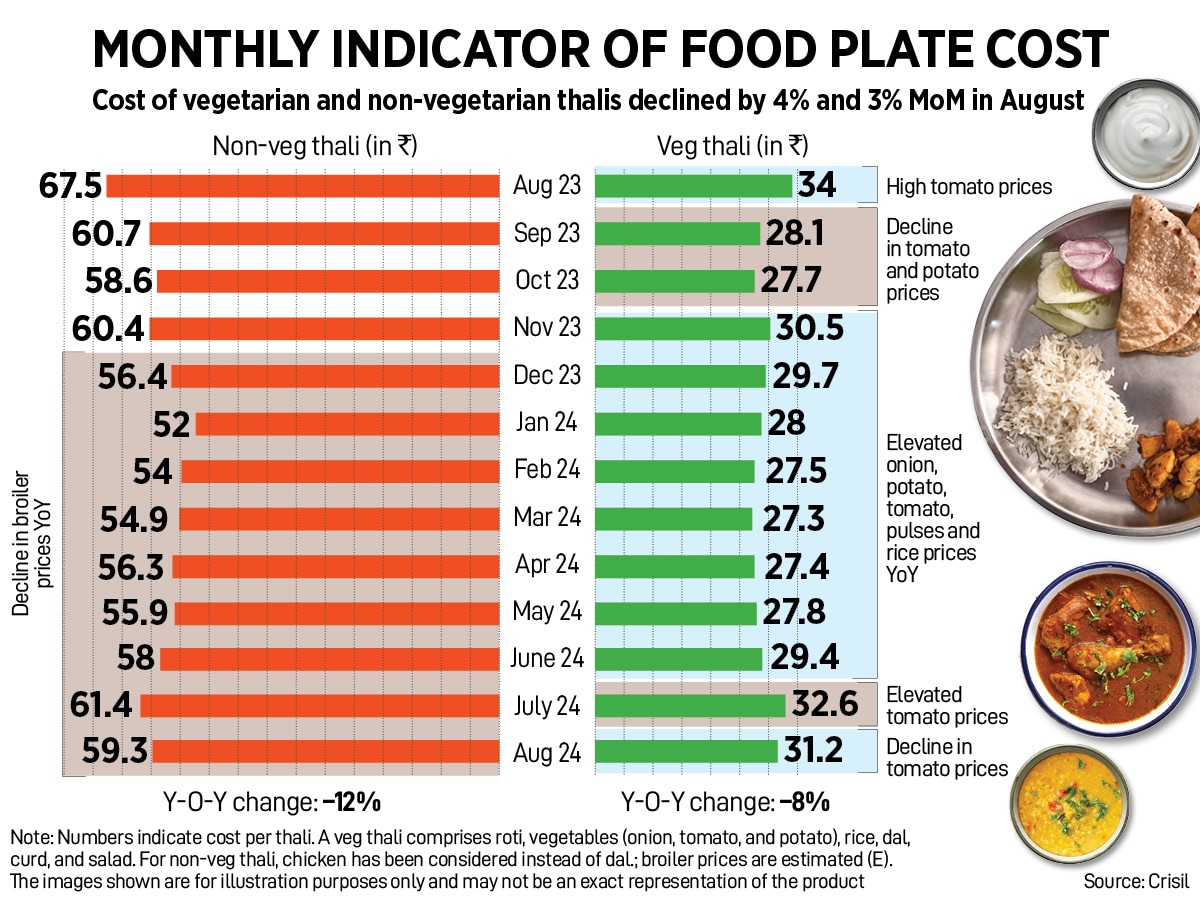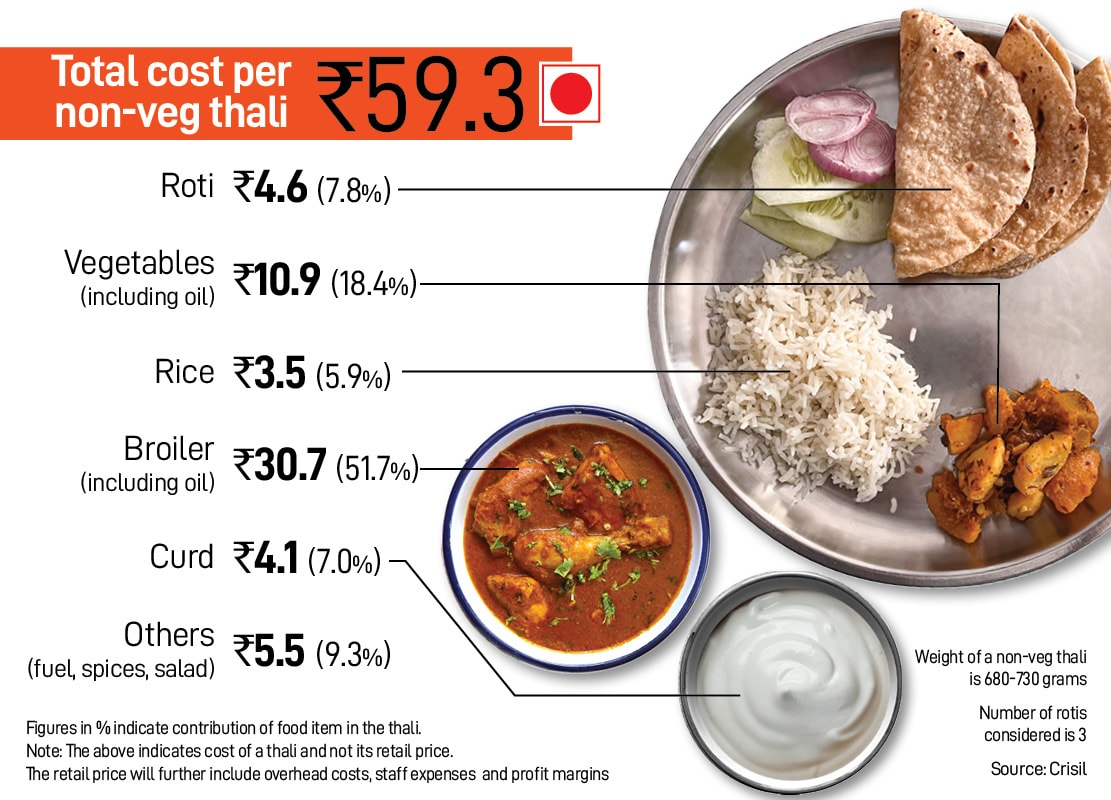
How India Eats: Steep cuts in thali costs in August
Tomato prices fell sharply, but onion and potato remained high. Lower fuel costs brought some relief to costs

Easing of prices of tomato, vegetable oil, chilli, cumin and fuel brought down costs of home-cooked vegetarian and non-vegetarian thalis in August. Cheaper broiler chicken helped the price of non-veg thalis to fall steeply. However, prices of two key ingredients, onion and potato, remained high.
Average price of a home-cooked veg thali fell 4 percent to Rs 31.2 in August, compared to Rs 32.6 in July, shows a Crisil analysis; it also declined by 8 percent from Rs 34 in August 2023.

Tomato prices fell 51 percent year-on-year (y-o-y) to Rs 50 per kg in August, from Rs 102 per kg in same month last year due to fresh arrivals from southern and western states; it fell 23 percent in August from Rs 66 per kg in July. Tomato accounted for 14 percent of a veg thali’s cost in August. Fuel cost slipped to Rs 803 for a 14.2 kg LPG cylinder in Delhi in March from Rs 1,103 in August last year. This, too, contributed to the decline of thali prices, say Crisil.
Prices of vegetable oil eased 6 percent, chilli by 30 percent, and cumin by 58 percent y-o-y; they account for less than 5 percent of the veg thali’s cost. However, high prices of onion and potato in August impacted overall thali prices: Potato prices rose 2 percent and onion by 3 percent month-on-month (m-o-m) in August.















